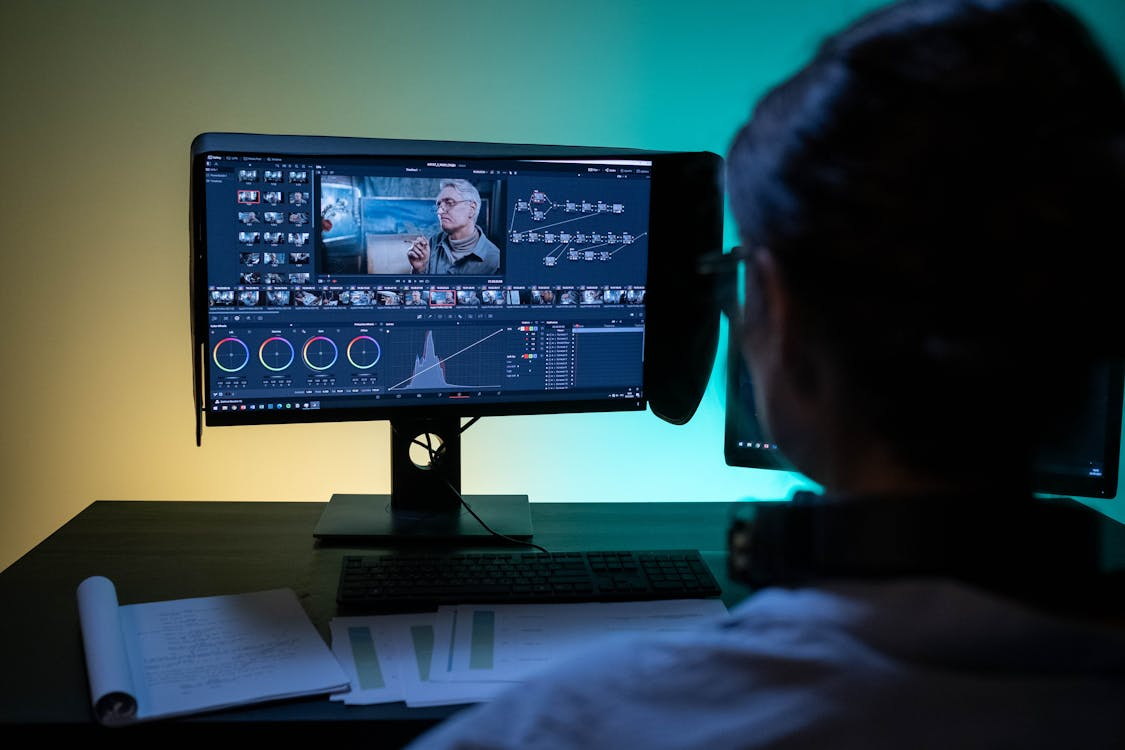In the age of streaming, short dramas have become a global phenomenon, captivating audiences with their snappy storytelling and relatable characters. Yet beneath the surface of this entertainment boom lies a subtle battle: making on-screen text—from flitting phone messages to street signs—and product placements feel seamless rather than jarring. These elements, if mishandled, risk becoming "visual noise," disrupting immersion and confusing viewers. The art of translating them elegantly requires a mix of linguistic precision, cultural awareness, and technical finesse.
The Invisible Challenge: Translating Ephemeral Text
On-screen text in short dramas is rarely static. A character’s phone lights up with a 2-second text; a street sign whizzes by as a car speeds past; a contract document is flipped through in seconds. Unlike dialogue, which can be softened or expanded in subtitles, these texts demand brevity and timing. Translators must distill meaning without losing context, all while ensuring the translation doesn’t obscure the original text or clutter the frame.
Take, for example, a scene from a Korean short drama where a character receives a KakaoTalk message: "오늘 저녁 7시 카페에서 만나자" (Let’s meet at the café at 7 PM today). A direct translation works here, but the placement matters. If the message appears in a small phone bubble, the English translation must fit the same spatial constraints—avoiding long words like "this evening" in favor of "tonight" to keep it concise. In contrast, a Japanese drama’s train station sign "渋谷駅" (Shibuya Station) needs no translation for global viewers familiar with Tokyo’s landmarks, but adding a subtle overlay "Shibuya Station" might help casual viewers without disrupting the scene’s authenticity.
The key tension here is between clarity and invisibility. Overly prominent translations can overshadow the visual storytelling, while overly minimal ones may leave viewers confused. As streaming platforms like Netflix note in their localization guidelines, the goal is to make the translation "feel like it belongs in the scene," not an afterthought.
Choosing the Right Tool: Dynamic, Burned-In, or Floating Subtitles?
Translators and video editors have three primary tools to tackle on-screen text, each with its own strengths and pitfalls.
Dynamic subtitles, which move or adjust size to match the original text’s position, shine with mobile interfaces or moving objects. Imagine a character scrolling through a social media feed; dynamic subtitles can "follow" the text as it moves, mirroring the user’s eye movement. This preserves the scene’s rhythm but requires technical skill—poorly synced dynamic text can feel choppy, like a misaligned overlay.
Burned-in subtitles, permanently embedded into the video, work best for static, critical text: think legal documents or historical plaques. In a Chinese short drama about a corporate scandal, a contract clause reading "甲方需在 30 日内支付尾款" (Party A must pay the balance within 30 days) becomes a burned-in subtitle that stays visible as the camera lingers. The downside? Burned-in text is inflexible—if a platform later targets a new language market, the video must be re-edited.
Floating subtitles, semi-transparent and positioned to avoid obscuring key visuals, offer a middle ground. They’re ideal for text that’s important but not central to the frame, like a store sign in a busy street scene. A Parisian boulangerie sign "Pain Frais" might get a floating "Fresh Bread" subtitle in the corner, letting viewers absorb the translation without missing the bustling street life behind it.
The choice depends on context. A 2023 study by the Localization Industry Standards Association (LISA) found that dynamic subtitles boost comprehension by 40% for mobile text scenes, while burned-in subtitles are 25% more effective for legal or technical text where precision is non-negotiable.
Product Placements: Bridging Global Brands and Local Tastes
Product placements add another layer of complexity. Unlike text, brands carry cultural baggage—what works in one market may flop in another. Translating their presence requires balancing brand recognition with local relevance.
For global brands, consistency is key. A Coca-Cola logo or iPhone interface needs minimal translation; their visual identity is universal. But taglines or product descriptions often need tweaking. A Korean drama featuring a skincare brand with the slogan "피부를 환하게 빛내다" (Let your skin shine brightly) might become "Light up your glow" in English—shorter, punchier, and aligned with Western beauty marketing norms.
Local brands, however, demand more creativity. When a Thai short drama showcases "Singha Beer," retaining the brand name (pronounced "Sing-ha") is better than translating it as "Lion Beer," which loses its cultural specificity. Adding a tiny, temporary overlay "Thailand’s iconic beer" during its first appearance can educate viewers without disrupting the scene. Similarly, China’s "Lao Gan Ma" hot sauce keeps its phonetic name in Western adaptations, with a brief "spicy fermented bean sauce" note to clarify—preserving brand identity while solving unfamiliarity.
Mistakes here can be costly. In a 2022 Vietnamese drama, a local instant noodle brand "Mì Quảng" was translated as "Quang Noodles" without context, leaving Western viewers puzzled. A better approach? "Mì Quảng – Vietnamese turmeric noodle soup"—rooting the brand in its culinary tradition.
The Art of Balance: When Less Is More
At its core, elegant translation of on-screen text and product placements is about restraint. Sometimes, the best choice is to omit translation entirely. A character’s doodle with a silly nickname, a background billboard for a local pharmacy—these details add texture without needing explanation. As veteran subtitler Marta Díaz notes, "Not everything needs to be translated. Some things are meant to feel ‘foreign’—they remind viewers they’re entering a different world."
This balance is especially crucial in short dramas, where every second counts. A 15-minute episode leaves no room for clunky translations. The most successful localizations feel intuitive, guiding viewers without drawing attention to themselves.
In the end, whether it’s a fleeting text message or a prominent product logo, the goal is the same: to serve the story. When translation fades into the background, viewers aren’t just watching a drama—they’re living in it. And in that immersion, the "visual noise" fades away, replaced by the universal language of good storytelling.











